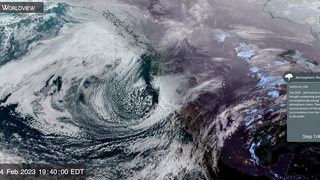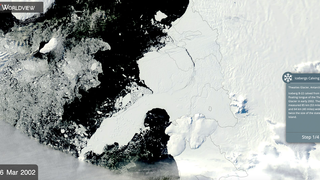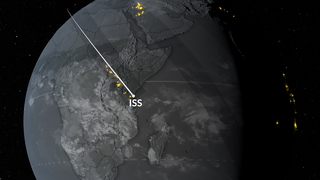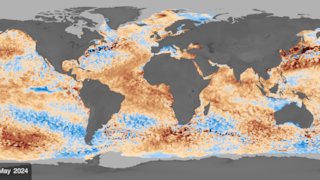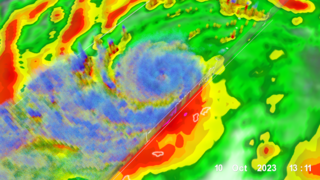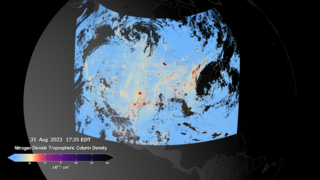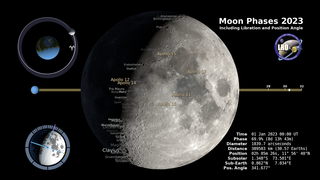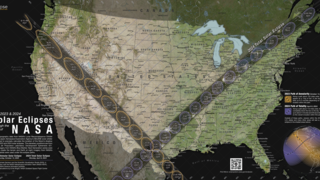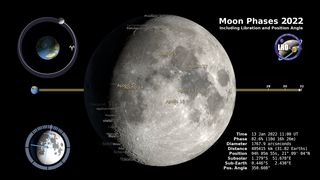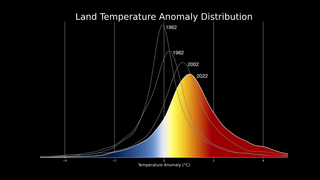Sun
ID: 4917
As one rises through the turbulent atmosphere of Earth, the density of the air decreases and winds become faster. From above, solar radiation as visible and ultraviolet light, along with energetic particles, rain down on the atmospheric gases splitting electrically neutral atoms and molecules into ions and free electrons. This process forms the high-altitude atmospheric region we call the ionosphere. The charged particles formed here interact with Earth's magnetic field to form more complex structures, such as equatorial ionization anomaly (EIA) also known as the Appleton anomaly formed by a process called the equatorial fountain. These interactions drive a process called the ionospheric dynamo.
But these high-altitude winds are not uniform. They are often altered by weather changes in the lower-altitude atmosphere, and this can drive changes in the particle motion high in the ionosphere.
The ICON satellite has instruments that measure charged particle motion though the region it travels (Ion Velocity Meter or IVM), and also winds on the limb of Earth (measured by MIGHTI). Sometimes these two regions are connected by a magnetic field line and we can actually 'see' how a change in lower altitude winds can drive a change in the high altitude charged particle motions. In the visualizations above, this process takes place between the 01:52 and 01:56 timestamp, highlighted with yellow magnetic field lines. We see the wind speed (green arrows on the left) change direction and switch the charged particle flow measured at the spacecraft (red arrows) from upward to downward.
ICON Snaps a Peek at the Ionospheric Dynamo
But these high-altitude winds are not uniform. They are often altered by weather changes in the lower-altitude atmosphere, and this can drive changes in the particle motion high in the ionosphere.
The ICON satellite has instruments that measure charged particle motion though the region it travels (Ion Velocity Meter or IVM), and also winds on the limb of Earth (measured by MIGHTI). Sometimes these two regions are connected by a magnetic field line and we can actually 'see' how a change in lower altitude winds can drive a change in the high altitude charged particle motions. In the visualizations above, this process takes place between the 01:52 and 01:56 timestamp, highlighted with yellow magnetic field lines. We see the wind speed (green arrows on the left) change direction and switch the charged particle flow measured at the spacecraft (red arrows) from upward to downward.
Related
Visualization Credits
Tom Bridgman (Global Science and Technology, Inc.): Lead Visualizer
Brian Harding (SSL Berkeley): Lead Scientist
Tom Immel (SSL Berkeley): Scientist
Laurence Schuler (ADNET Systems, Inc.): Technical Support
Ian Jones (ADNET Systems, Inc.): Technical Support
Joy Ng (KBR Wyle Services, LLC): Producer
Kathalina Tran (SGT): Writer
Brian Harding (SSL Berkeley): Lead Scientist
Tom Immel (SSL Berkeley): Scientist
Laurence Schuler (ADNET Systems, Inc.): Technical Support
Ian Jones (ADNET Systems, Inc.): Technical Support
Joy Ng (KBR Wyle Services, LLC): Producer
Kathalina Tran (SGT): Writer
Please give credit for this item to:
NASA's Scientific Visualization Studio
NASA's Scientific Visualization Studio
Short URL to share this page:
https://svs.gsfc.nasa.gov/4917
Mission:
Ionospheric Connection Explorer (ICON)
Data Used:
Note: While we identify the data sets used in these visualizations, we do not store any further details nor the data sets themselves on our site.
This item is part of this series:
Interface to Space
Keywords:
SVS >> Geomagnetic Field
GCMD >> Earth Science >> Sun-earth Interactions >> Ionosphere/Magnetosphere Particles
GCMD >> Earth Science >> Solid Earth >> Geomagnetism >> Magnetic Field
GCMD >> Location >> Ionosphere
SVS >> Hyperwall
NASA Science >> Sun
GCMD >> Earth Science >> Sun-earth Interactions >> Ionosphere/Magnetosphere Dynamics
GCMD >> Earth Science >> Sun-earth Interactions >> Ionosphere/Magnetosphere Dynamics >> Electric Fields/electric Currents
GCMD >> Earth Science >> Sun-earth Interactions >> Ionosphere/Magnetosphere Dynamics >> Magnetic Fields/magnetic Currents
SVS >> Particles and Fields
GCMD keywords can be found on the Internet with the following citation: Olsen, L.M., G. Major, K. Shein, J. Scialdone, S. Ritz, T. Stevens, M. Morahan, A. Aleman, R. Vogel, S. Leicester, H. Weir, M. Meaux, S. Grebas, C.Solomon, M. Holland, T. Northcutt, R. A. Restrepo, R. Bilodeau, 2013. NASA/Global Change Master Directory (GCMD) Earth Science Keywords. Version 8.0.0.0.0
https://svs.gsfc.nasa.gov/4917
Mission:
Ionospheric Connection Explorer (ICON)
Data Used:
ICON/Ion Velocity Meter/IVM also referred to as: IVM
Event List - University of Texas, Dallas - 2020-01-15T00:00:00 to 2020-01-15T02:05:00ICON/Michelson Interferometer for Global High-resolution Thermospheric Imaging/MIGHTI also referred to as: MIGHTI
Observed Data - Naval Research Laboratory (NRL) - 2020-01-15T00:00:00 to 2020-01-15T02:05:00This item is part of this series:
Interface to Space
Keywords:
SVS >> Geomagnetic Field
GCMD >> Earth Science >> Sun-earth Interactions >> Ionosphere/Magnetosphere Particles
GCMD >> Earth Science >> Solid Earth >> Geomagnetism >> Magnetic Field
GCMD >> Location >> Ionosphere
SVS >> Hyperwall
NASA Science >> Sun
GCMD >> Earth Science >> Sun-earth Interactions >> Ionosphere/Magnetosphere Dynamics
GCMD >> Earth Science >> Sun-earth Interactions >> Ionosphere/Magnetosphere Dynamics >> Electric Fields/electric Currents
GCMD >> Earth Science >> Sun-earth Interactions >> Ionosphere/Magnetosphere Dynamics >> Magnetic Fields/magnetic Currents
SVS >> Particles and Fields
GCMD keywords can be found on the Internet with the following citation: Olsen, L.M., G. Major, K. Shein, J. Scialdone, S. Ritz, T. Stevens, M. Morahan, A. Aleman, R. Vogel, S. Leicester, H. Weir, M. Meaux, S. Grebas, C.Solomon, M. Holland, T. Northcutt, R. A. Restrepo, R. Bilodeau, 2013. NASA/Global Change Master Directory (GCMD) Earth Science Keywords. Version 8.0.0.0.0
